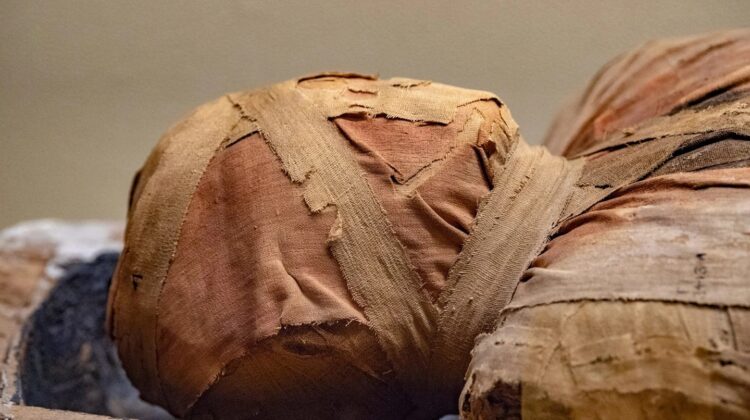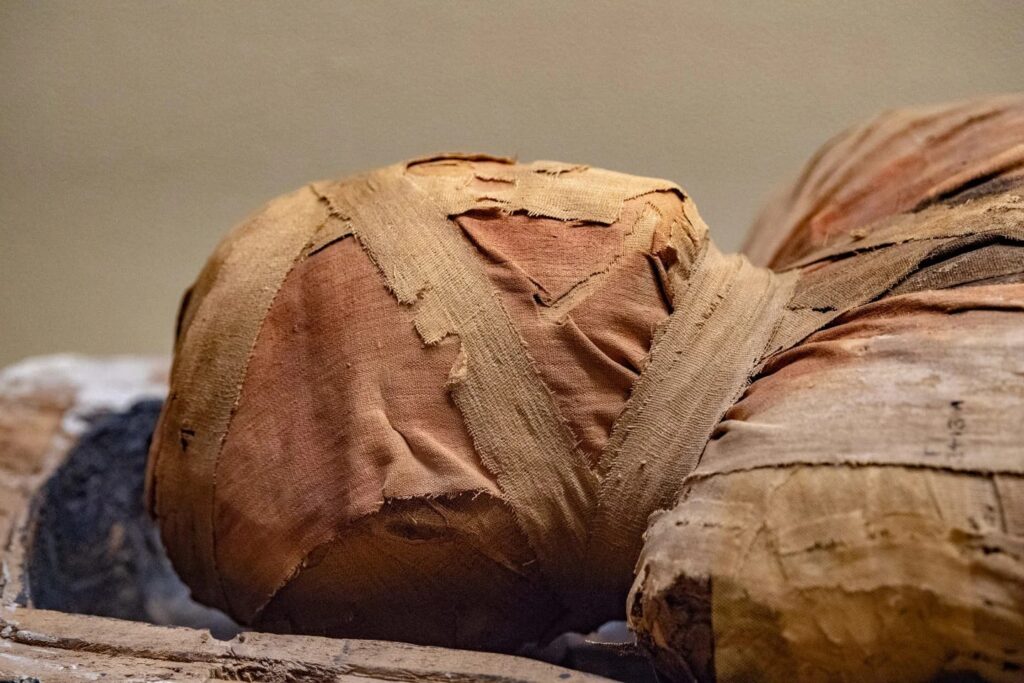
In a momentous archaeological discovery in Naples, a 2,000-year-old sarcophagus has been carefully unsealed, revealing a mummy that has astonished researchers with its remarkable state of preservation.
The initial exploration of the sarcophagus in Naples involved the use of a micro camera, which provided promising glimpses that encouraged archaeologists to proceed with the delicate process of opening the tomb. Upon finally breaching the sealed entrance, the archaeologists were met with a sight that surpassed all expectations.
Led by Simona Formola, the team of archaeologists uncovered the Tomb of Cerberus in the northwest city of Giugliano. Inside, they found a person laid out in a strikingly well-preserved state, lying face-up and covered with a shroud. Surrounding the individual were numerous artifacts typical of burial rituals, including ointment jars and tools used for body preparation.

According to a statement from the Superintendent of Archaeology, Fine Arts, and Landscape for the Naples Metropolitan Area, the meticulous care given to the deceased, alongside the assortment of burial goods, strongly suggests that this person was likely the intended occupant for whom the mausoleum was originally constructed.
Marian Nuzzo, a superintendent with the Italian Ministry of Culture, remarked, “The Tomb of Cerberus continues to provide invaluable insights into the Phlegraean territory near Liternum, expanding our understanding of the past and offering opportunities for multidisciplinary research.”
The discovery has opened up a wealth of new avenues for investigation. Ongoing laboratory analyses of samples taken from the burial and surrounding sediment have already yielded significant data about the treatment of the body and the funerary practices of the time, greatly enriching our knowledge of ancient Naples.
Initial examinations indicate that the shroud found with the mummy has likely undergone mineralization, likely influenced by the unique climatic conditions within the tomb. Detailed fabric analysis is currently underway, aimed at determining the structure, type, and quality of the fibers used in its creation, which could provide further insights into social and cultural practices of the era.
Meanwhile, DNA analysis and examination of organic substances, such as pollen, found within the sarcophagus are ongoing. It has been revealed that the body was treated with creams containing Chenopodium, also known as goosefoot, and absinthe, which were likely used to aid in preservation.
As research progresses, the Ministry anticipates that continued sampling and analysis of the sarcophagus contents will unveil additional details about the broader necropolis, shedding light on the social and cultural fabric of Naples some 2,000 years ago.

Leave a Reply